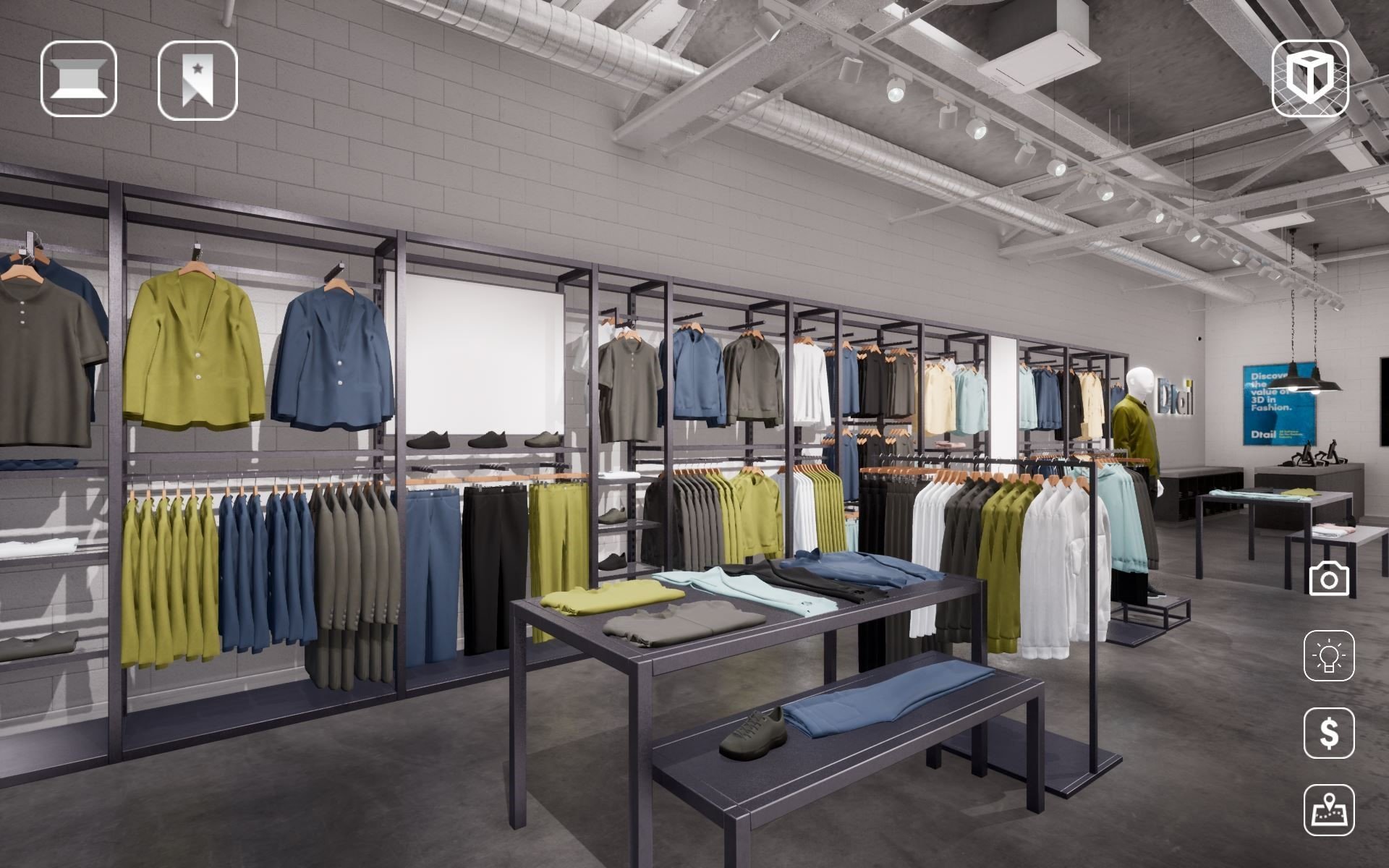Does the Future of Fashion Contain both Digital and Physical fashion?
Image Courtesy of FashionableData.com
The change and innovation of the fashion industry are grand and fast-paced. The number one priority of most fashion houses at the moment is to keep up with the global technological evolution. Various integrations of tech have already been attempted. These include NFT-only products, VR-infused experiences, and digital fashion. Simultaneously, brands are in search of larger commitments to sustainability.
One of the reasons Digital Fashion is such a large trend at the moment is because it carries a promise of ethical and sustainable opportunities for brands. Dress X is a prime example of a digital fashion brand. As a relatively new business, it has gathered major appraisal and mass coverage by all esteemed publications. Dress X aims to provide consumers the ability to indulge in the instinctual desire to follow fast-paced fashion trends, without the downside of environmental harm. To find out more about Dress X; check out one of our previous articles here.
Image Courtesy of Dezeen.com
The reasons responsible for this unique offer are as follow;
Since digital fashion only exists in the digital realm it
Does not contaminate ecosystems with toxic dyes, or treatments.
Does not end up in landfills at its end of life
Is cheaper to produce, and thus competes with Highstreet Brands (notorious for being thoroughly damaging to the environment) without compromising environmental health.
Releases less CO2. Dress X even published a study, about the amount of water consumption and CO2 emissions involved in creating these clothes. It takes into consideration the smallest factors, like each employee’s daily water intake, and still comes in at less than regular fashion labels. Find more info here: https://dressx.com/pages/sustainability-raw-data-references .
Lastly, Dress X doesn’t play by the regular sustainable rules. It attempts to combat wastefulness but doesn’t try to slow fashion down. This is a major, not to mention unique advantage over the competition.
Image Courtesy of VogueBusiness.com
However, it can be debated that there is a significant downside to avid Digital Clothing use as well. The main concern is the thinking that Digital Clothing can replace physical. Unfortunately, we are still limited to the interactions we can have with these e-garments. Unless technology evolves a few light years ahead, it is our digital avatars who take pleasure in these digital clothes. Therefore, we are running the risk to offset the possible positive effects of digital fashion. Especially if we attempt to focus our support on these innovative initiatives, thereby neglecting the persisting issues of original fashion practices that do not halt their existence.
The duality of digital fashion impact can be explained through one simple factor – disposable income has a limit. The target consumer of most high street brands and digital fashion brands are Gen Z and Millennials, consequently they share a similar pricing structure. See image below for price comparison. This comparison reveals that digital clothing is just as large of a commitment as purchasing real clothing. However, it does not reduce the need for physical clothing, instead it simply diminishes the potential spending power of these young consumers. Therefore after indulging in digital fashion, they might be more likely to only purchase fast fashion, because sustainable clothing options would be too expensive for them.
In summary, digital fashion has the potential to limit the purchasing power of young consumers, who are just beginning to involve themselves into sustainable practices (McKinsey, 2020) , not to mention who struggle already with making the difficult choice to indulge in ecological clothing options. As stated in Forbes; “52% of consumers do want the fashion industry to follow more sustainable practices, only 29% of consumers would pay more for sustainably”. (Moore, 2019)
The greatest concern is that the exciting and new offer of digital clothing will momentarily mute the sensibilities of young consumers to their commitment to sustainable clothing. Yet in the long-run result in them having no choice but to purchase less ethically because that is all they will be able to afford. The issue continues, since digital clothing is avidly marketed as a sustainable alternative, however, if treated irrationally it might actually be an accelerator in environmental harm.
However, the noble efforts of Digital Fashion initiatives must not be outshined by this threat. Namely the attempt to divert the avid trend-based consumption habits, of Gen Z and Millennials alike. Yet, even with the efforts being pure, these newly emerged brands must realise that they are walking the line of sustainability. Moving forward there needs to be a balance that differentiates the purposes of these two clothing options and establish complementary roles to work together towards globally more sustainable fashion industry.
Image Courtesy of PixiePool.com
Possible collaborative efforts:
Have significantly cheaper digital fashion options; negate the necessity to have digital fashion which is equivalent in price to real-life clothes. This will neutralize the ability of digital fashion purchases to chip away at the potential purchasing power of many young fashion consumers. Leaving them with more opportunities to by Sustainable clothing, which is more steeply-priced than fast fashion.
Collaborations between sustainable brands and ‘Figital’ brands; while the effect of newness has a moving appeal towards young consumers it is possible to use their power to shine a light on certain sustainable clothing brands and inform the youth as to their missions, and product ranges. Informing the customer is so important. Since fast fashion has skewed our perception of production costs, and normal garment pricing.
Have precise functions: the idea that digital fashion can quench that human desire to indulge in newness, that the fashion industry is known for - is amazing. There needs to be a way to accentuate that. This can possibly result in young consumers being satisfied with an extended lifecycle of their physical clothing, as they will be exercising their desire to follow trends digitally. Yet it must be marketed as such.





